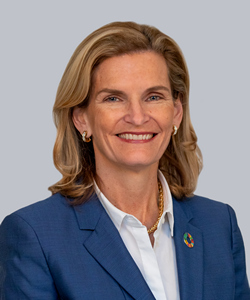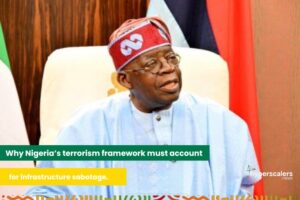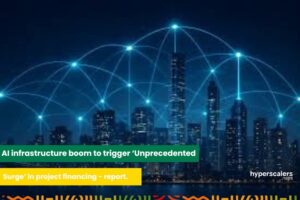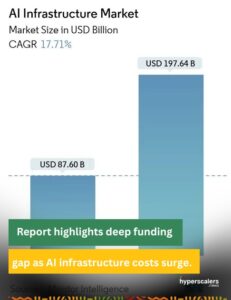The International Telecommunications Union’s (ITU) Mobile Network Coverage Facts and Figures 2023 report has decried Africa’s dismal performance in 5G adoption, with a meager 6 per cent coverage, as opposed to a global average of 40%.
“Europe boasts the most extensive 5G coverage, with 68 per cent of the population covered, followed by the Americas region (59 per cent) and the Asia-Pacific region (42 per cent). Coverage reaches 12 per cent of the population in the Arab States region and less than 10 per cent in the CIS region (8 per cent) and Africa region (6 per cent)”, stated the report.
Africa’s 5G lag isn’t a lone wolf; it’s a pack of challenges such as:
Infrastructure Deficit: The lack of fiber optic backbone across countries cripples potential bandwidth and speed. Building this digital highway requires considerable investment and strategic planning. According to Hamilton Research, as at June 2022, Africa’s total inventory of operational terrestrial fibre- optic network was 1,184,028km. According to an S & P Global Market Intelligence report in 2023, Mainland China led in the total length of fiber optic cable deployment among developing markets at 59.6 million kilometers of fiber lines installed.
Affordability Hurdles: High-end 5G smartphones and data plans remain out of reach for many Africans, especially low-income earners and rural communities, creating a significant cost barrier to entry. This gap is further exacerbated by rising inflation and fluctuating foreign exchange rates in many African countries, making even basic 5G access a financial tightrope walk for a large portion of the population.
Stakeholders are exploring alternative pricing models, subsidizing access for specific groups, and promoting locally-sourced affordable devices as crucial steps in bridging the affordability gap and ensuring inclusive 5G access, but it is not Uhuru yet.
Regulatory Maze: While infrastructure, affordability, and skills play a significant role, complex bureaucratic processes and unclear regulatory hurdles also contribute to the sluggish pace of 5G adoption in Africa. Nigeria has been on the 5G train since 2018, and so far, has seen 2 successful 5G rollouts (MTN and Airtel). Securing 5G spectrum licenses is also a bureaucratic process spanning over two years, significantly delaying rollout. In Kenya, planned 5G spectrum auctions faced repeated postponements due to regulatory disputes, creating confusion and hindering investment.
In South Africa, its 5G process started since 2010, but was delayed due to court cases, multiple approvals required from the Independent Communications Authority of South Africa (ICASA) and the Department of Telecommunications and Post Office (DTP). Uganda’s initial 5G regulations were criticized for leaving crucial aspects undefined.
Skilled Workforce Scarcity: Building and maintaining a 5G network requires specialized skills not readily available in most African countries, necessitating training programs and talent acquisition strategies.
African government can invest in the training of the workforce for 5G technology by enlisting universities and other post-tertiary institutions, while funding training and retraining for workers to prepare for and meet 5G-related workforce needs. Nigeria’s 3 Million Technical Talent (3MTT) programme, is expected to build Nigeria’s technical talent backbone and it is expected thay 5G training will be addressed.
Lingering Legacy Networks: The continent’s heavy reliance on 2G and 3G, even as these networks are being phased out globally, diverts resources and attention away from 5G advancements. In an Nigerian Communications Commission (NCC) report in August 2023, 5G subscriptions in Nigeria stood at 0.83%, 4G was 28%; 3G was 10%, and 2G stood at 60.3% of subscribers.
Beyond the Lag: A Double-Edged Sword:
The 5G gap isn’t just about missing out on the latest and greatest tech; its consequences include stunted economic growth and a miss out on the faster speeds, improved efficiency, and new opportunities for innovation in various sectors like healthcare, agriculture, and manufacturing that 5G promises. Slow adoption risks leaving Africa behind in the global digital economy.

Within countries, the gap between those with access to 5G and those stuck with older, slower networks could widen further, exacerbating existing socioeconomic inequalities.
Bridging the 5G gap requires a collective effort by concerted stakeholders; governments must streamline regulations, promote infrastructure development, and foster public-private partnerships, with targeted investments in underserved areas; telecoms operators have to innovate better pricing models, tailored data plans, and develop rural accessibility initiatives to widen the 5G net.
Technology Partners must improve knowledge sharing, skills development programs, and create affordable technology solutions can empower African nations to leapfrog the 5G hurdle.
Africa’s 5G journey might be behind schedule, but it’s not a lost cause. The continent has the potential to rewrite the script, and become a hub for 5G-powered innovation. By addressing the challenges head-on and working together, African nations can turn the 5G lag into a springboard for a brighter, more connected future.




